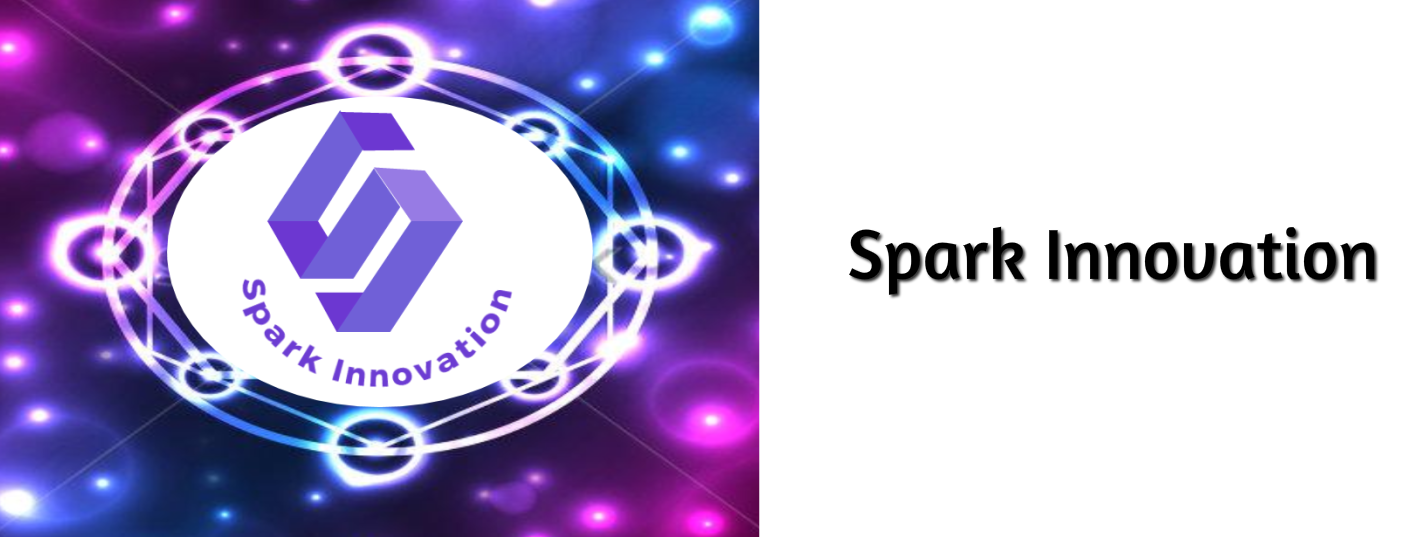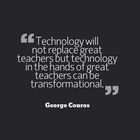What if we could spark innovation using technology ?
Mrs. Girguis is located in a district that is implementing the Inquiry/Project-based learning model. She provides her students with inquiry labs, in which she utilizes small groups for collaboration and peer instruction.. The closest approach to this model is blended learning, but that method makes little connection to Inquiry, PBL, or creativity in a middle school mathematics classroom.
Rose gives her students a voice and choice in their projects and encourages them to express their own creativity and interests, thereby allowing them to develop their own motivations. She provides personalized learning experiences via differentiated instruction and innovative teaching strategies, which are made possible with the growing educational technology that is available. Mrs. Girguis has also enrolled her students in the Learn Storm Competition by Khan Academy. This site allows her to design instruction that is visually stimulating, and to incorporate games such as xpmath.com in her classroom, which makes learning more fun. Her students demonstrate their learning of the material with a variety of modalities. Rose is using the flip-class model (once called the inverted model) and takes advantage of the class time freed up by this model for Inquiry/Discovery work, and projects which provide her students with opportunities for deeper learning and problem-solving.
Mrs. Girguis' school is part of the New Tech Network (NTN), and further inspiration for her research came from this Teaching Channel Video on the building blocks of project-based learning (PBL). Follow the video link to learn more about NTN and PBL.
4 Comments
I decided to enroll in the Master's Degree in Innovative Learning program at Touro University. This decision began my journey into innovative teaching strategies, Technological Pedagogical Content Knowledge (TPACK), Substitution, Augmentation, Modification, and Redefinition (SMAR), and the flipped teaching model.
Learning about these two models, led to my driving question and research. The program emphasis is in closing the achievement gap, using technology, and innovative teaching strategies. I entered the program just to find out the best practices of using technology, but gained so much more. Soon after entering the program I heard of the flipped classroom model. I am in a district that has adopted the Inquiry/problem/project model. I couldn't grasp how I was supposed to teach the mathematics standards, technology standards, and do Inquiry based learning all at the same time. My driving question for my action research was: Can using technology to flip a middle school mathematics classroom combined with Inductive teaching strategies increase student engagement and performance? I tried different technologies in my classroom. Sometimes failing, but it always made for humorous stories and lessons learned to share with colleagues.
I found research on the flip model, IQL/ PBL, blended learning (which is the direction I was headed), and educational technology, Each had much support. So with my twenty years in education, I learned there is no one way that is best. I believe in variety. I decided to combine the flip model with the inquiry/PBL model. It is a fairly new concept, and it will require more research. Based on my findings and research. This is a real look into the future and way to transform learning to higher levels of achievement for all students in mathematics (for any subject, but my focus is in mathematics instruction and improving student performance and achievement in mathematics). Why should we pay attention as teachers, parents, educators, school and district leaders?
How can technology support my solution and why is it the right direction to move mathematics instruction.?
The background resulting in the flipped classroom model has been developing since 1993, when Allison King wrote “From Sage on the Stage to Guide on the Side” (King, 1993). Building on King’s work, Eric Mazur, a Harvard professor, presented his peer-instruction concept, in which students collaborate with emphasis on the Socratic Method by using guiding questions to facilitate their deeper conceptual understanding. Mazur's research detailed the percentage of students who switch out of a STEM major, separated by course pedagogy. “The proportion of students who were enrolled in the traditionally taught introductory physics course and switched out of a STEM major is more than twice that of students enrolled in the courses taught using PI (peer-instruction)” (Mazur & Watkins, 2013, table 1). Salomon Khan, known for his free website Khan Academy, was a major contributor to the idea of the flipped classroom through the use of video to promote learning, offering 24/7 access to the site, and espousing the positive growth mindset that anyone can learn anything (Cargile, 2015). The above developments led two science teachers, Jonathan Bergman and Aaron Sams (authors of “Flip Your Classroom: Reach Every Student in Every Class Every Day”) to begin creating their own lesson videos on YouTube so that they could focus on deep learning tasks and experimentation during class. They were successful, and now have a website dedicated to helping teachers flip their classrooms, attend conferences, and deliver professional development throughout the United States. Jon Bergman and Aaron Sams have written this book to guide you to the flipped mastery level quicker. I really wish this had been available when I started. There are stages that teachers go through as they make this transformation, and the shift may take 1-3 years for teachers, depending on their experience. It is most difficult for new teachers, while teachers with 10 or more years of experience often move to the flipped mastery level more quickly according to the book Flipped Learning , by Jonathon Bergman and Aaron Sams. Creating the video lessons/lectures (or finding those that align to the textbook and the common core standards) takes time for any teacher, and locating the technology to build up their resources and the time to learn how to create and publish them requires ongoing training in the Technological Pedagogical Content Knowledge (TPACK) model. “TPACK is the basis of good teaching with technology, and requires an understanding of the representation of concepts using technologies; pedagogical techniques that utilize technologies in constructive ways to teach content; knowledge of what makes concepts difficult or easy to learn and how technology can help redress some of the problems students face; knowledge of students’ prior knowledge and theories of epistemology; and how technologies can be utilized to build on existing knowledge and to develop new or strengthen old epistemologies” (Punya & Koehler, 2006, p. 1021). Supporters of the flipped instructional model say that "students are doing the lower levels of cognitive work in terms of the revised Bloom’s taxonomy (gaining knowledge, vocabulary, and basic comprehension) outside of class, and focusing on the higher forms of cognitive work (application, analysis, synthesis, and/or evaluation) in class with the support of peers and the instructor" (Brame, 2013, p. 1). As technology has grown more available to students, with iPads, Chromebooks, and hand-held devices available in classrooms for student use, it is now easier for teachers to incorporate the flipped model. Many institutions have become technology schools or bring-your-own-device (BYOD) schools, and are investing monies to provide a 1:1 ratio of computers to students. This development has led to an increase of project-based learning PBL and challenge-based learning. Chen (2010) acknowledges that 21st century children are being raised with technology, and its use must be incorporated into modern classrooms. Milton Chen spoke in my school district at the CUE conference. Have you ever heard of Edutopia.org? Very inspiring and motivational. As technology has grown more available to students, with iPads, Chromebooks, and hand-held devices available in classrooms for student use, it is now easier for teachers to incorporate the flipped model. Many institutions have become technology schools or bring-your-own-device (BYOD) schools, and are investing monies to provide a 1:1 ratio of computers to students. This development has led to an increase of project-based learning and challenge-based learning. Chen (2010) acknowledges that 21st century children are being raised with technology, and its use must be incorporated into modern classrooms.
Now that more teachers are flipping their classrooms, new ideas on how to best utilize that approach have arisen. More research into these pedagogies is necessary, and more data to provide evidence about which activities promote the desired outcomes: namely, that American students are engaged learners with increased performance, allowing for our future competition in the global economy, and a larger number of students entering STEM fields. I want my capstone website to help people understand the new technologies and the flipped model and how it lends itself nicely to Inquiry and Blended learning environments to decrease the achievement gap and increase performance for all children. |



 RSS Feed
RSS Feed
